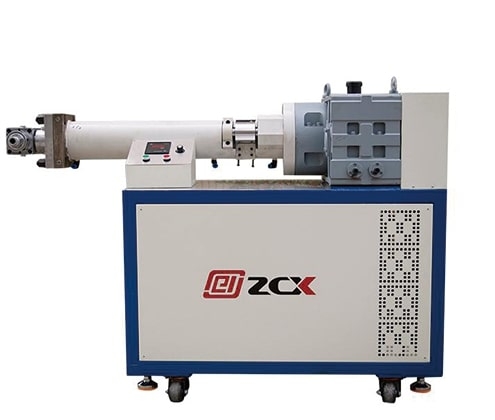The Development and Uses of Silicone Extrusion Equipment

Silicone extrusion machine are essential parts of the manufacturing process for a wide range of products, especially in sectors where accuracy, robustness, and adaptability are required. They have transformed production capacities, providing unparalleled efficiency and uniformity for products ranging from medical devices to automobile parts. This article explores silicone extrusion machines' history, operation, and uses, emphasizing their importance in contemporary production.
The Development of Equipment for Silicone Extrusion
Since their invention, silicone extrusion machine have advanced significantly. Extrusion technology was invented in the 19th century, mainly to extrude rubber and metals. However, major developments in extrusion technology were actually sparked by the post-World War II industrial boom, especially with the introduction of synthetic materials like silicone.
Due to its exceptional flexibility, biocompatibility, and high-temperature tolerance, silicone has rapidly established itself as a material of choice for a wide range of applications. The necessity to treat this versatile material consistently and efficiently led to the creation of specialized silicone extrusion machines. With their sophisticated automation features, finely tuned tooling, and control systems, modern silicone extrusion machines are a need in today's high-demand industrial settings.
The Operation of Silicone Extrusion Machines
The fundamental idea behind silicone extrusion is to push silicone material through a die that has a predetermined form to produce continuous profiles with certain cross-sectional shapes. Feeding the extruder with raw silicone material, usually in the form of pellets or putty, is the first step in the process. The die, screw, and barrel make up the extruder.
● Feeding and Melting: The extruder feeds the raw silicone into its barrel, which is then gradually heated. There are a number of ways to heat something, such as using steam or electrical heating components. The substance melts and becomes malleable as it moves through the barrel.
● Pressurising and Forcing: The molten silicone is forced towards the die by the rotating screw mechanism within the barrel. For homogeneous melting and constant pressure, the screw's design—including its pitch and depth—is essential.
● Shaping: The extruded product's shape is defined by the precisely manufactured die located at the end of the barrel. The silicone assumes the required cross-sectional profile as it is pushed through the die. This step is crucial for maintaining the finished product's dimensional precision.
● Cooling and Curing: The silicone is chilled when it comes out of the die, usually by running it via an air cooling system or a water bath. To improve its mechanical qualities and resilience, the extruded silicone may additionally be cured using heat or chemical procedures for specific purposes.
● Cutting and Finishing: Following cooling and curing, the continuously extruded silicone is cut to the necessary lengths and undergoes finishing procedures, including trimming or surface treatment, to satisfy particular application requirements.
Silicone Extrusion Machine Applications
Silicone extrusion machines are extremely versatile and are used in many different sectors. Among the well-known applications are:
● Medical Devices: Silicone is perfect for medical tubing, catheters, and seals because of its biocompatibility and flexibility. Silicone extrusion machines meet strict regulatory requirements and provide the accuracy and uniformity needed for medical-grade items.
● Vehicle Industry: Because silicone components are resistant to severe chemicals and extremely high temperatures, they are crucial in the fabrication of vehicle seals, gaskets, and hoses. These components are produced with extreme accuracy using extrusion machines, guaranteeing dependability and efficiency.
Because silicone extrusion machines offer a dependable way to create silicone components of superior quality, they have revolutionized manufacturing in a number of industries. Technological and material advances have characterized the history of these devices, resulting in increased precision and efficiency. Silicone extrusion machines will stay at the forefront, advancing technology and facilitating the production of goods that satisfy the highest requirements of performance and quality as long as industries continue to demand novel solutions.
Visit now:: https://www.zcxmachine.com/
- Industry
- Art
- Causes
- Crafts
- Dance
- Drinks
- Film
- Fitness
- Food
- Games
- Gardening
- Health
- Home
- Literature
- Music
- Networking
- Other
- Party
- Religion
- Shopping
- Sports
- Theater
- Wellness
- News


